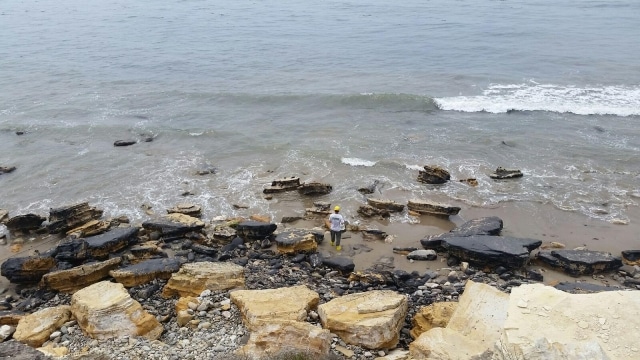California regulators released a final environmental review yesterday that found fracking has “significant and unavoidable impacts” — less than a week after they approved nine new offshore frack jobs.
The state’s Division of Oil, Gas and Geothermal Resources (DOGGR) released its final report on the environmental impacts of extreme oil extraction techniques like fracking and acidization, and found multiple impacts to air quality, public safety and the climate that “cannot be mitigated.”
A state law passed in 2013, SB 4, set a January 1, 2015 deadline for both the environmental impact report and a new set of regulations for well stimulation techniques to go into effect the same day.
DOGGR wrote the regulations, California’s first-ever rules on fracking, and they went into effect on the first of the year, as ordered.
Now, six months later, the agency has finally released the independent scientific study on well stimulation techniques that the regulations were supposed to be based on.
“California has reversed the regulatory process when it comes to fracking,” Jackie Pomeroy, a spokesperson for CAFrackFacts, said in a statement.
“State regulators finalized California’s fracking regulations a full six months before the environmental impacts of these unconventional well stimulation techniques were understood. We now know that these techniques come with serious risks that cannot be mitigated.”
“Reasonably foreseeable accidents and releases”
The “signifcant and unavoidable” designation means DOGGR found fracking and acidization responsible for “significant adverse environmental effects that cannot be mitigated to a level of less than significant through the application of feasible mitigation measures.”
Those effects include increasing air pollution to levels that violate existing air quality standards and exposing “sensitive receptors to substantial pollutant concentrations.”
Fracking and acidization also “generate greenhouse gas emissions that may have a significant impact on the environment, [and] conflict with an applicable plan, policy or regulation adopted for the purpose of reducing the emissions of greenhouse gases.”
The California oil and gas regulators also found the well stimulation techniques in question pose a significant risk to public health and safety “by exposing the public to accidental hazardous materials releases from pipelines” and creating “a hazard to the public or environment through crude oil transport and reasonably foreseeable accidents and releases,” among many other impacts that cannot be mitigated.
Fracking threats, onshore and off
Nonetheless, DOGGR saw fit to approve nine applications for offshore fracking permits submitted by THUMS Long Beach Company. Occidental Petroleum bought THUMS in 2000. The permits are for wells Occidental plans to frack on the four man-made islands in Long Beach Harbor that came with the purchase.
The new offshore fracks would begin in August and continue through December — and would be the first in state waters since 2013, according to Center for Biological Diversity attorney Kristen Monsell.
There’s no way to say if the 105,000 gallons of oil that spilled a month and a half ago from a pipeline owned by Plains All American Pipeline at Refugio State Beach in Santa Barbara County contained any fracking chemicals, Monsell told DeSmog in an email. But we can be reasonably certain that the presence of those chemicals would (or could) have made the spill a lot worse for marine life.
At least 10 toxic fracking chemicals commonly used in fracking operations in California’s waters could kill or harm a broad array of species, including already threatened species like blue whales and sea otters, CBD scientists have found.
“Approving new offshore fracking just weeks after Santa Barbara’s devastating oil spill is a new low,” Monsell said. “Gov. Brown’s oil regulators just saw how dangerous oil production in coastal areas can be, but they didn’t hesitate to greenlight these fracks. The high pressures and dangerous chemicals used in this toxic technique have no place in our beautiful ocean.”
Image Credit: T.P. Romise
Subscribe to our newsletter
Stay up to date with DeSmog news and alerts






